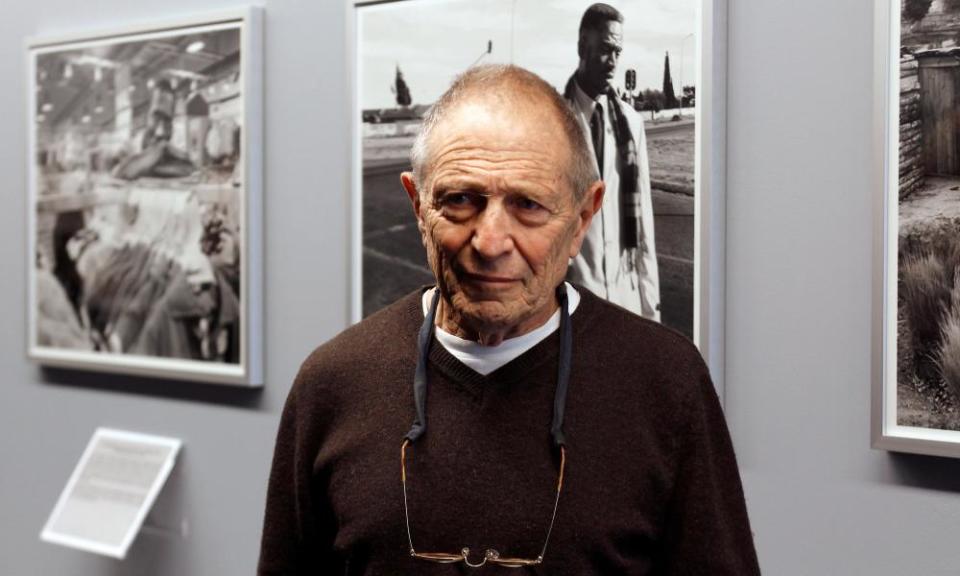South African photographer David Goldblatt dies aged 87

The photographer David Goldblatt, whose work chronicled apartheid-era South Africa, has died, aged 87.
Goldblatt documented the racial divide of his home country during some of its most turbulent years, and was credited with bringing a strong moral and ethical dimension to his work. Through photographing simple scenes, such as children playing or exhausted workers sleeping on their bus journey home, he revealed the power imbalance at the heart of South African society.
“During those years my prime concern was with values – what did we value in South Africa, how did we get to those values and how did we express those values,” Goldblatt once reflected on his work. “I was very interested in the events that were taking place in the country as a citizen but, as a photographer, I’m not particularly interested, and I wasn’t then, in photographing the moment that something happens. I’m interested in the conditions that give rise to events.”
Goldblatt was born in 1930 in Randfontein, a city 25 miles to the west of Johannesburg. He took up photography aged 18, the year apartheid was enforced, choosing to work almost entirely in black and white. Over the decades he developed a style that captured quiet, almost tranquil moments, which nevertheless spoke deeply of the trauma caused by his country’s imposed racial divide. His 1964 photograph, A Farmer’s Son With His Nursemaid, shows the titular pair both turned towards the camera, the boy’s hands on the nursemaid’s shoulder in front of a barbed wire fence. It was these subtle moments, rather than dramatic historical turning points, that most fascinated Goldblatt as a photographer.
In a 2017 interview with the Guardian, Goldblatt talked about the peculiar relationships he observed between white plot owners and the black servants who lived on them.
“Many [owners] were deeply racist. They had a profound fear of black people. At the same time, they had a relationship with them on their plots that was intimate and affectionate, generous to a degree that surpassed what I knew from my middle-class urban life.”
Goldblatt’s photography has been exhibited all over the world, including shows at Moma in New York, London’s Barbican and a highly acclaimed retrospective at the Pompidou Centre in Paris earlier this year. His most renowned works include the 1973 book On the Mines, a collaboration with one of his key influences, the Nobel laureate Nadine Gordimer, and 1975’s Some Afrikaners Photographed – the result of extensive travelling around his home country.
A statement from the Goodman Gallery in Johannesburg, which holds much of Goldblatt’s work, read: “It is with great sorrow that we announce that David Goldblatt has died, aged 87. He passed away peacefully in the early hours of this morning at his home in Johannesburg. David’s passing is a significant loss to South Africa and the global art world.”

 Yahoo News
Yahoo News 